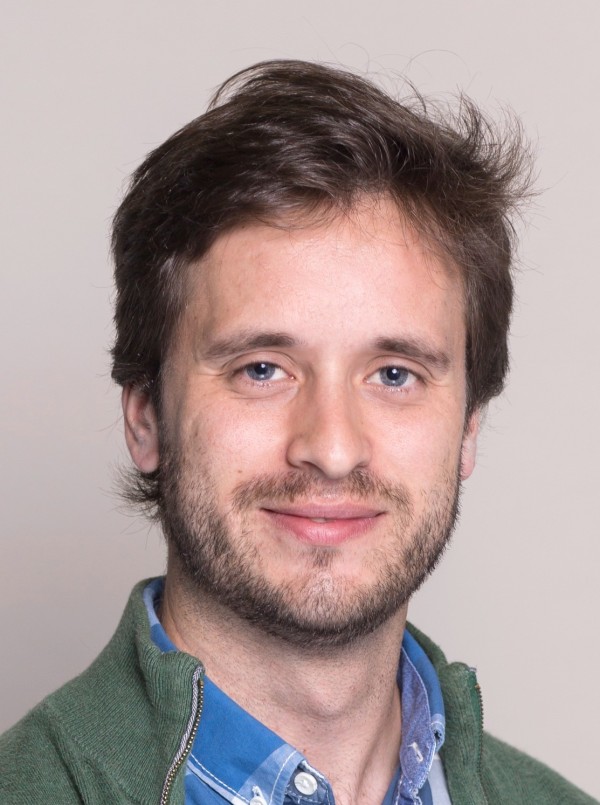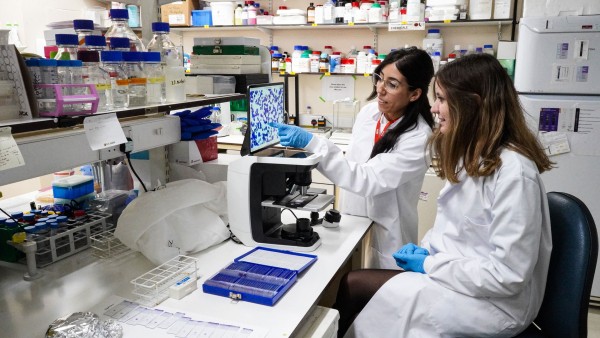15 October 2024
Epileptic seizures are perceived to happen at random and can have catastrophic consequences. Patients are often unable to reliably report their seizures to their doctors. Many devices to monitor epilepsy are restricted to the hospital setting. To address these problems, Prof Mark Richardson and Dr Pedro Viana are testing a new device that measures brain activity for many months, during patients’ daily lives.
Dr Pedro Viana is a clinical research fellow at the Institute of Psychiatry, Psychology & Neuroscience (IOPPN). KHP News met Dr Viana to find out more about this new device and explore what it could mean for patients with epilepsy.
What is epilepsy?
Epilepsy is a common and disabling neurological condition affecting around 600K people in the UK. Epilepsy is defined as a tendency of the brain to develop epileptic seizures and can be due to multiple underlying causes (e.g. genetic conditions, acquired brain lesions such as stroke or traumatic brain injury). Epileptic seizures are surges of abnormal electrical activity in the brain which, depending on the brain area affected, could manifest in different ways.
For example, some people experience impairment of consciousness, while others have limb jerking, sensory symptoms or cognitive symptoms (e.g. language disturbance, memory disturbance). Seizures come “out of the blue” which puts people at risk of harm and, in a rare number of cases, seizures can lead to sudden death. There are many available treatments for epilepsy, and around 70% of people with epilepsy remain free from seizures on one or a small number of medications. However, up to a third of patients are resistant to available treatments and continue at significant risk. We need to get better at monitoring this disease so we can help more patients to avoid harm and enable them to take control over their seizures.
How can new technology help people with epilepsy?
There is very active research into sensor systems that can measure the effects of seizures, but they are not all faultless. For example, sensors that go under the mattress detect movement patterns related to seizure activity, but they only provide data for the times when a patient is lying down. Also, they only detect motor seizures, so patients miss valuable data about the other types of seizures they may experience. Data recorded on some smartwatches can also be used to track seizures, but results vary depending on the signals the device is measuring, and where the device is placed. These non-invasive devices don't measure brain activity. If we can use a device to measure brain activity directly, we will be able to get much richer data around the types of seizures that patients experience and the frequency of those events.
What technology are you testing?
We are testing a new subcutaneous electroencephalogram (EEG) device (UNEEG 24/7 SubQTM, UNEEG Medical, Lillerod, Denmark) to measure electrical activity of the brain. The device is implanted in the tissue between the skull and the skin under local anaesthetic. Once implanted, we can record brain wave activity for many months, whereas in the past we used to be restricted to only recording in the hospital or for a few days at home.
What are the main findings of your research?
We have shown that people can use the device very easily and record for many months. We have confirmed our suspicion that, when EEG data is compared with patient diaries, the diaries are often found to be unreliable. Patients can miss more than half of their own seizures. Patients can have amnesia around the time of seizures, and the clinical signs are not always visible to outsiders, so seizures can be missed. This is crucial, because clinicians manage patients mostly based on their seizure diaries. Hence an objective measurement of seizure activity would be extremely useful.
This analysis has so far been retrospective, so we haven't given feedback to patients or clinicians in real time. But now we are running a multi-centre study (REAL-ASE Study, funded by the NIHR Invention 4 Innovation Programme) where we are doing exactly that. We are recruiting patients who are recording their data, the data is being reviewed by experts who feedback the information to the patients’ clinicians. The clinician and patient can then have a more informed discussion about possible treatment changes.
Can seizures be predicted?
It would be lifechanging to be able to reliably predict seizures and warn patients in advance, so that they could take precautions to protect themselves, or extra medication during periods of high risk, while at the same time feeling more confident and safer during periods of low risk. Preliminary data has shown it is possible to predict seizures above chance with EEG data, including data from these devices. I believe this is something that will take a bit more time to develop, but if it can be achieved it would be of great benefit to patients.
What have your enjoyed about working on this project?
I came into this project from a clinical background as a Neurologist. I have cherished the opportunity to work in a multidisciplinary environment, including data scientists, mathematicians and engineers. I would encourage other clinicians to pursue academic projects like these, to expand their skillset and to ask the right questions on behalf of the patients we are aiming to help.
I have also greatly enjoyed working with Prof Mark Richardson, joint director for KHP Neurosciences and head of the adult Epilepsy Research team and Principal Investigator of this study.
This project would not be possible without the patients who have volunteered to be part of our study or the support of our funder, the Epilepsy Foundation of America (My Seizure Gauge Program).





